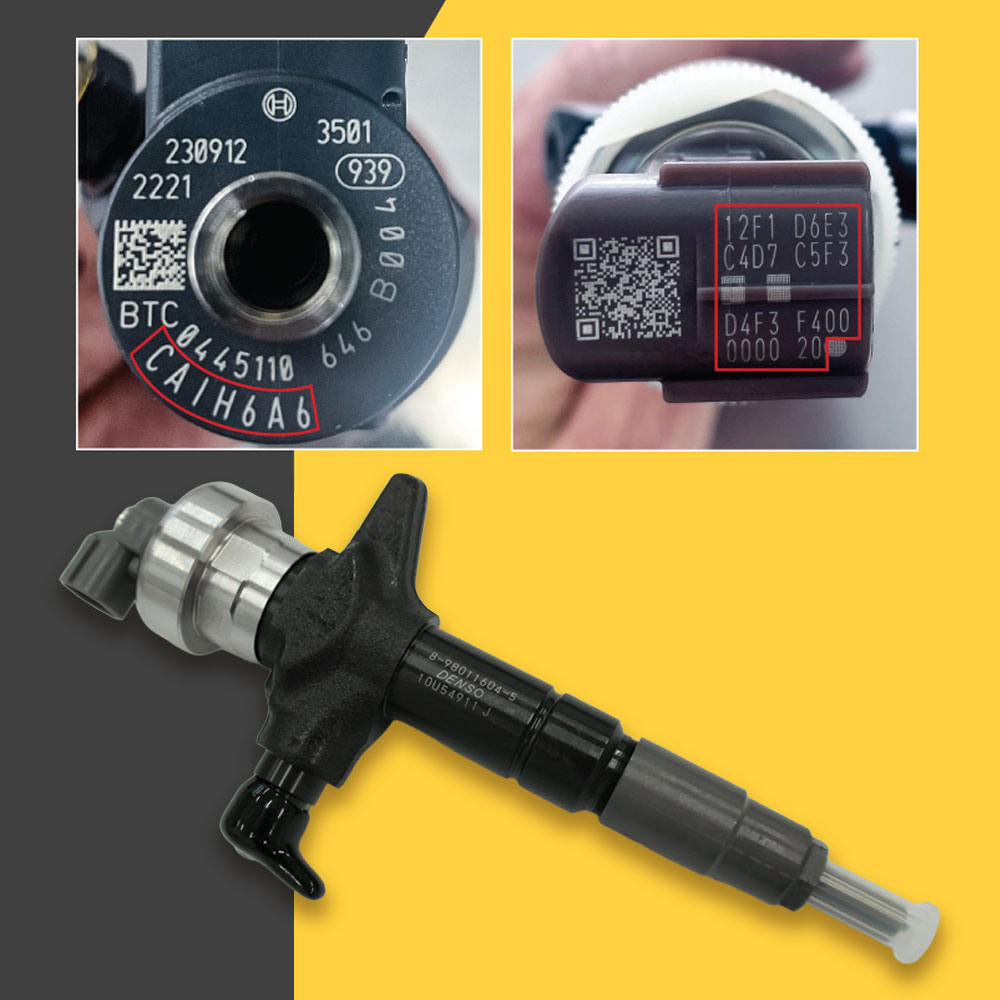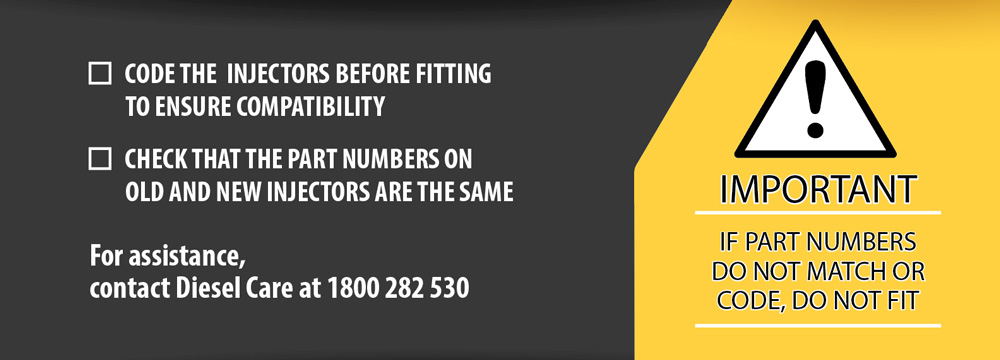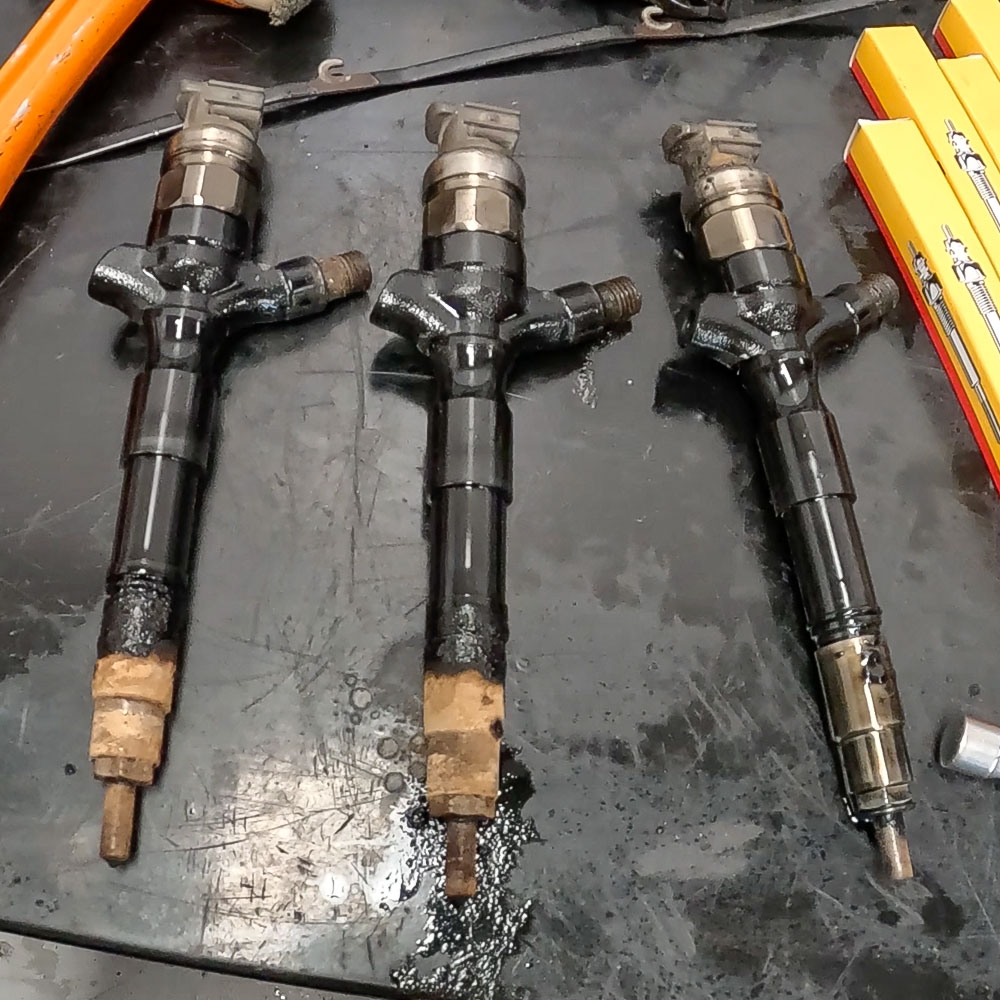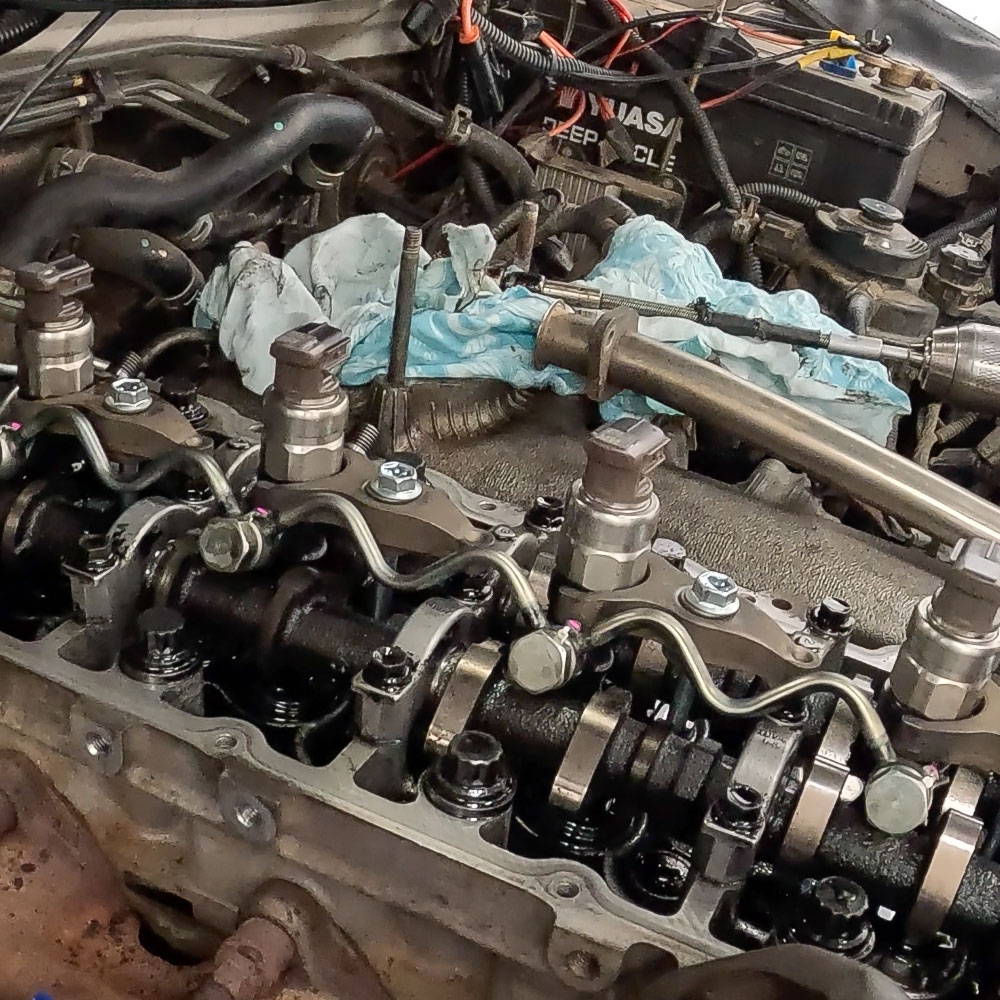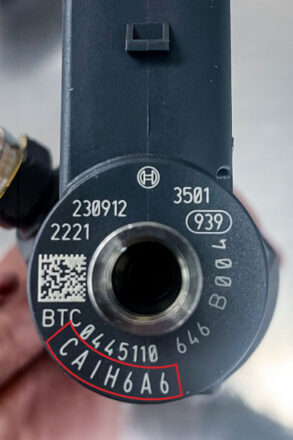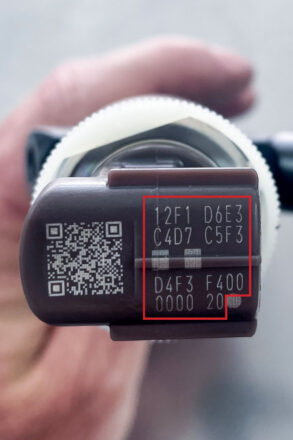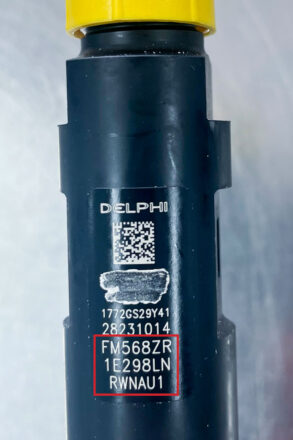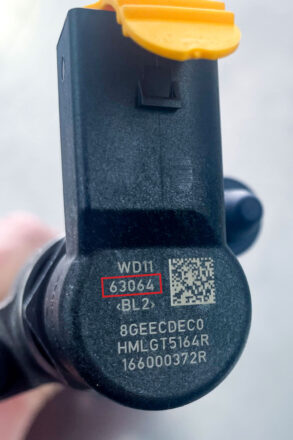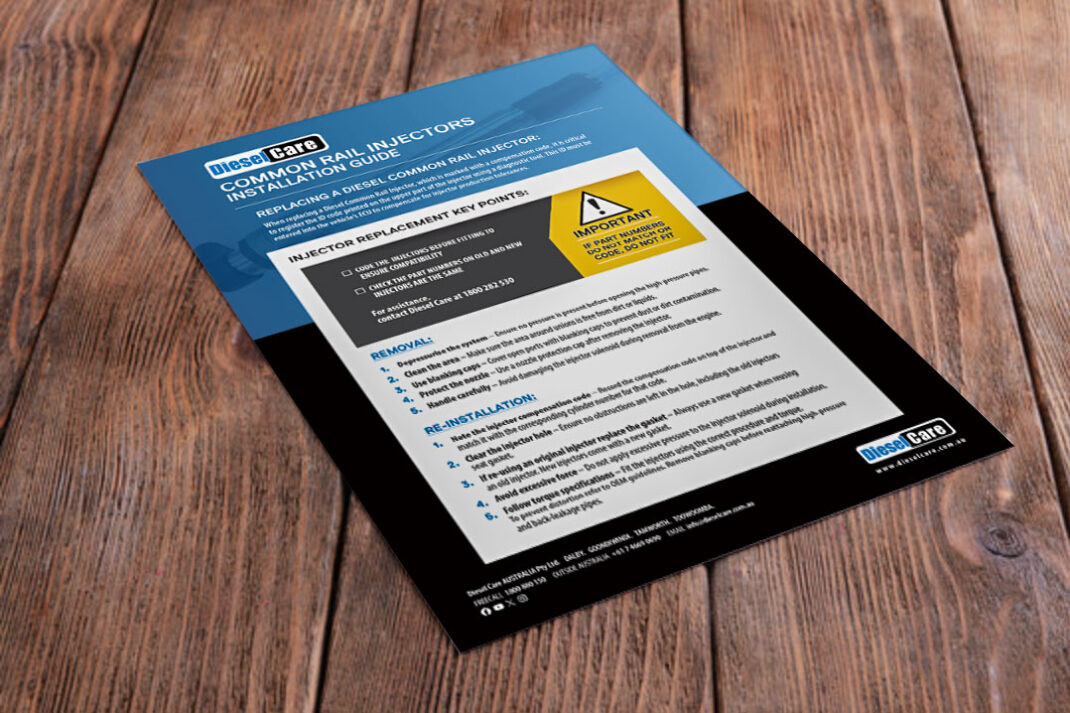COMMON RAIL INJECTORS INSTALLATION GUIDE
Replacing Diesel Common Rail Injectors is crucial to maintaining optimal engine performance and reliability. In addition to registering the injector compensation codes in the ECU, proper handling, cleaning, and torque procedures are vital for preventing contamination and ensuring a secure fit. Below are step-by-step instructions on how to safely remove the old injectors and install new ones for best results.
When replacing a Diesel Common Rail Injector, which is marked with a compensation code, it is critical to register the ID code printed on the upper part of the injector using a diagnostic tool. This ID must be entered into the vehicle’s ECU to compensate for injector production tolerances.
